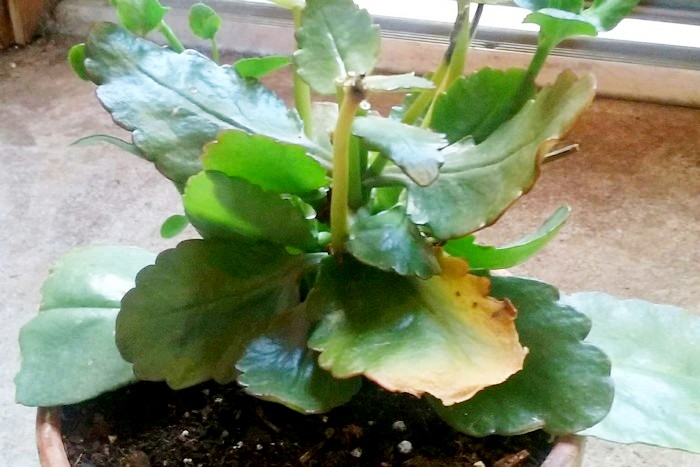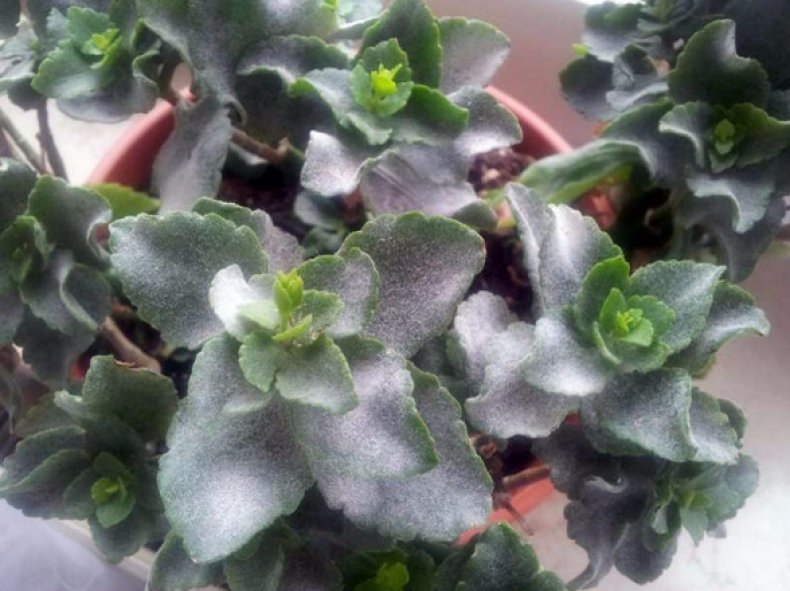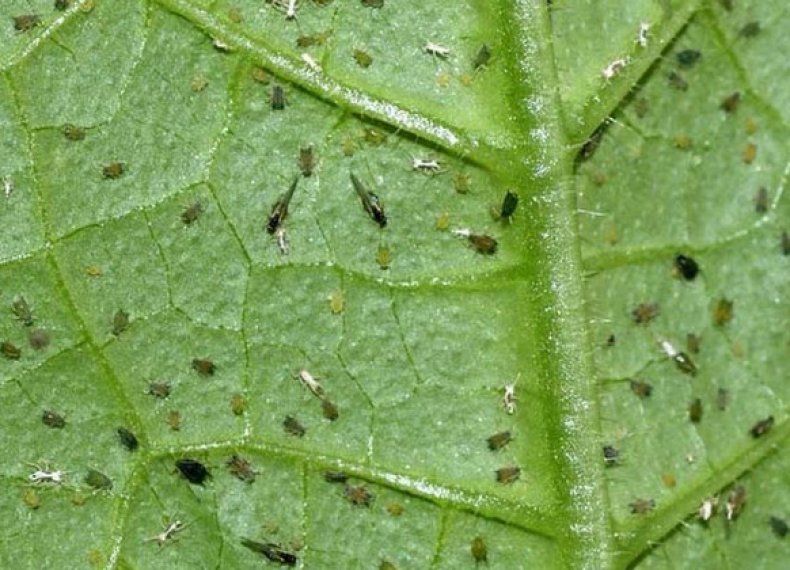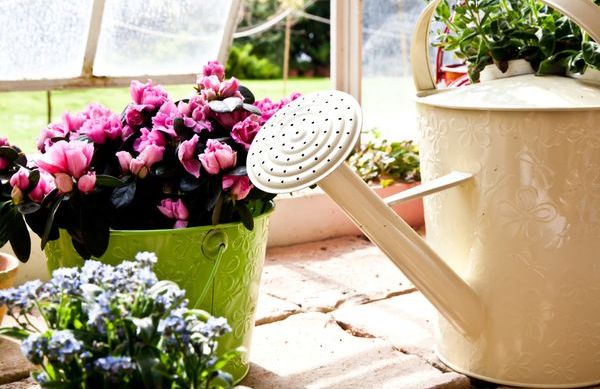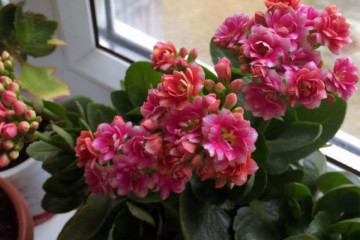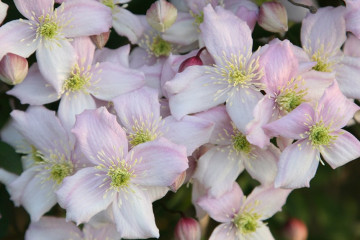Kalanchoe diseases - causes and treatment
Content:
Kalanchoe diseases are quite common and can provoke negative consequences for the flower. The cause of the development of anomalies is the violation of the rules of crop care. To cope with the problem, you need to take timely action. In advanced cases, it is impossible to eliminate pathologies at home.
Why do Kalanchoe leaves turn yellow, dry and wither
Pathologies can be easily detected by the appearance of the culture. With the development of diseases in Kalanchoe, the leaves may turn yellow, dry out, wither or fall off. Sometimes the plant loses its ability to bloom.
These symptoms require timely initiation of treatment. Otherwise, the Kalanchoe can dry out completely.
Violation of the conditions of maintenance and care of the plant
Why do the leaves of the Kalanchoe turn yellow? The most common cause of problems is the violation of the rules of crop care. To establish provoking factors, you should pay attention to the following symptoms:
- Yellow foliage, dry tips and rapid crop growth indicate a lack of light. In this case, it is recommended to move the container with the flower to a lighter place. However, it is important to make sure that the pot is not on the windowsill.
- Leaves can dry out and fall off due to the musty air. In this case, it is recommended to frequently ventilate the room.
- Dark spots on foliage are caused by sunburn. The appearance of this sign is the basis for moving the pot to another place.
- Lack of nutrients can cause the yellow leaves of the plant to fall off.
- Leaf curling is observed when there is an excess of nitrogen or peat in the soil. In such a situation, it is necessary to move the bush to a more suitable soil.
- The softening and falling of leaves occurs against the background of excessive watering or rotting of the roots. To solve the problem, you need to reduce watering or treat the root system.
- Falling shoots may be due to a lack of irrigation. In this case, the plant may even dry out. Regular crop maintenance will help to avoid this.
- The yellowing of the leaf plates may be due to excess sunlight.
Major succulent diseases and home therapy
Many people are interested in why the leaves of the Kalanchoe turn yellow and dry. The main cause of problems is the violation of the rules of crop care. In this case, foliage and shoots are covered with spots, bloom, mold, small insects.
Late blight
With the development of this pathology, the Kalanchoe becomes covered with a brown or brown bloom. The development of pathology is due to impaired ventilation and excess moisture in the soil.
At the same time, it is important to change the frequency of watering, choose the right fertilizers and carry out preventive procedures. To quickly eliminate the pathology, the plant should be treated with fungicidal preparations.
Powdery mildew on Kalanchoe
With the development of powdery mildew, white spots appear on the leaves. This disease is caused by too warm and dry indoor air. If plaque forms on the leaves on the Kalanchoe, this means that the plant needs to be watered frequently and moved to a cooler place.
If a white bloom appears on the leaves on the Kalanchoe, what should be done in such a situation? It is recommended to spray the plant with fungicidal preparations. With a quick start of treatment, the flower will recover immediately.
Stem rot
Sometimes the trunk or stems of the crop become black and wither. Freezing of culture becomes the cause of problems. Even in winter, Kalanchoe requires a temperature of at least +15 degrees. This will ensure the full development of culture.
So that the plant does not rot and does not collide with fungi, it must be properly watered. When infested with stem rot, the foliage becomes smaller. In this case, the disease affects the entire culture.
Gray rot
When a culture is infected with this pathology, the leaves acquire a sticky texture and become covered with a gray bloom. To get rid of the problem and restore the health of the Kalanchoe, it is recommended to replace the soil, provide high-quality ventilation and systematic watering. Maintaining the correct temperature is of no small importance.
Ring spot
When this pathology appears, rotting of the stem and the formation of circular spots on the leaves are observed. These symptoms are very dangerous for the plant. In most cases, it is impossible to save him.
Kalanchoe pests
If leaves turn yellow on the Kalanchoe or other problems appear, attacks of dangerous pests can be suspected.
Mealybug
These parasites are capable of destroying the plant in a short time. At the same time, small gray insects appear on the bushes. It can be quite difficult to identify them. They hide in the leaves and buds of the plant during flowering.
The following signs testify to the defeat of culture:
- falling foliage;
- waxy coating on leaves and stem;
- the formation of black mold.
It is recommended to fight parasites manually. To do this, sprinkle the culture with mineral oil, and then collect the beetles with paper napkins. For prevention, the culture should be treated with soapy water.
Shield
The scabbard most often affects the inside of the leaves or the stem. It is a fairly large brown beetle. When attacked by parasites, the leaves of the culture quickly dry out.
To deal with insects, they need to be collected by hand. For this, you can use a cotton pad or napkins. After removing the parasites, the foliage should be wiped with an alcohol solution and treated with an insecticidal preparation.
Aphid
This is a common pest, which can be very difficult to cope with. The problem is caused by excess fertilizer in the soil.
Aphids mainly affect the shoots and the inner part of the leaves. The parasites absorb the juices and produce a sticky coating that prevents the plant from breathing properly. Dots also appear on the bush.
Mites
These pests settle on the lower part of the leaves. Their appearance is associated with increased dryness of the air. The flower has yellowish leaves. In addition, pests weave a thin web on the foliage, as a result of which they curl and crumble.
To cope with parasites, insecticides are used. You can also delete them manually. This can be done with napkins. Then treat the bush with mineral oil.It is also permissible to use a soap solution.
How to reanimate Kalanchoe after illness
To restore Kalanchoe after leaf disease, a soap solution is often used. Alcohol wipes are also highly effective. The procedure should be carried out three times a week.
Instead of alcohol, it is permissible to use an infusion of garlic. To prepare it, you need to mix 5 crushed cloves with a glass of water, leave for 2 hours in a dark place and strain. Spray the culture with a ready-made product.
When treating a plant, you should adhere to the following recommendations:
- provide the flower with full care;
- eliminate pests in any way possible;
- pinching;
- maintain normal parameters of humidity, illumination, temperature;
- apply fertilizers.
Thanks to strict adherence to the rules, the Kalanchoe will be able to recover. On average, it is recommended to apply fertilizers once a month. Fertilizers for succulents are often used for this, but complex formulations can also be used.
Pinching prevents the crop from drying out. The procedure should be carried out with a disinfected instrument. This must be done carefully. If the bush is damaged, sprinkle it with charcoal.
Prevention of diseases and pests
To avoid the development of dangerous diseases or parasite attacks, you need to engage in prevention. It consists in strict adherence to plant care measures.
Proper plant care
To grow a strong and healthy plant, you need to follow a number of rules:
- Water the culture wisely. The plant absorbs and retains liquid well. Therefore, overflow is more dangerous for him than lack of water. A slight drought will only benefit the Kalanchoe. In the heat, water the plant as needed.
- Maintain optimal illumination parameters. The plant is able to withstand even exposure to direct sunlight. At the same time, the culture hibernates in winter. Therefore, it needs to be moved to a darker place. For a culture to bloom, it is necessary to reduce the length of daylight hours.
- Maintain the correct temperature regime. In warm weather, the culture requires a temperature of +18 .. + 28 degrees. In winter, it will withstand even lower parameters - +10 .. + 16 degrees.
- Transplant the plant in a timely manner. The roots of the culture are growing rapidly. Therefore, during the active development of a flower, it must be transplanted. It is recommended to pull the Kalanchoe out of the container very carefully so as not to damage the lump of soil.
- Cut the crop in a timely manner. During the flowering period, this procedure is allowed to be performed only with a plant disease. The affected areas must be carefully cut off at the junction with healthy ones.
Kalanchoe is a popular houseplant that is grown by many flower growers. At the same time, sometimes the culture can encounter diseases or pest attacks. To cope with problems, you should use special products and provide the flower with proper care.

